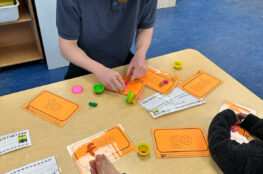Nowhere to start
Writing is hard, and if you are reading this, I hope this doesn’t come off that way. One of the things I love about doing journals on my WordPress is that I can add my own personal flair and personality to this. This allows me to connect my beliefs and heart into these, and avoid the “fluff” that can occur in journals or reflections. This has made writing easier for me, allowing me to tap into my writing style and produce work I am proud of. Unfortunately, it was not always this easy. As a young boy, I used to loathe and despise writing, and the thought of putting pen to paper for longer than five sentences would heavily impact me. The problem was not literacy; in fact, I love and still have a deep passion for reading. The issue stemmed from my inability to put my thoughts on paper in a way that made me feel validated; I could never make something that I was proud of. Teachers loved to emphasize the hook, and I agree, captivating readers early is a great skill to teach students, but in my younger self’s mind, this was the most challenging part of writing. When starting, I could never hook myself; I would spend what felt like eternity in the mind of a boy trying to put together the perfect sentence to scratch an unreachable itch. Now, this sounds dramatic, but I really struggled with it, and I see it in the classroom, too. Students who are so bright and so creative, but can’t start. No matter how much encouragement you give them or how many prompts you give them, the art of the start is hard. Now this is why I love the idea of RAFT. The concept serves as an effective tool for creating ideas, but based on my personal struggles, I connect to it as the nudge students need to get the writing ball rolling. Unfortunately, I was not able to do this activity in class, but throughout the season, I have spent 120 hours on a bus or a ferry, allowing for ample time to mess around with the format. And in my time using RAFT, the format felt like a launch pad to get writing going, let alone a fantastic strategy at keeping writing focused and concise, another skill I struggle with.

BC Curriculum
The BC curriculum emphasizes personalized learning and fostering creativity, which is why I’m so drawn to the RAFT writing method (Role, Audience, Format, Topic). RAFT is such a powerful tool because it gives students a clear structure to jumpstart their writing while still leaving room for their unique voice and ideas. As someone who struggled deeply with writing as a kid, mainly with starting I see RAFT as the perfect solution for students who feel stuck or overwhelmed. It takes the pressure off crafting that “perfect hook” and gives them a creative framework to explore different perspectives and formats. For example, students could write a letter as a historical figure, create a speech as an activist, or even draft a diary entry from the perspective of a character in a novel. This aligns with the curriculum’s focus on critical thinking and communication and makes writing more accessible and engaging for all learners. RAFT also ties into the idea of inclusivity, as it allows students to approach writing in ways that feel meaningful to them, whether they’re strong writers or need extra support. It’s a method that empowers students to take risks, express themselves, and ultimately feel proud of their work—something I wish I had more of as a young writer. By incorporating RAFT into my teaching, I hope to create a classroom where writing feels less like a hurdle and more like an opportunity to explore, create, and connect.
Teacher Competencies
The teacher competency that stood out for me when looking at RAFT is “implement pedagogically context-appropriate sound practices linking assessment for/as/of learning, planning for learning, instructional strategies and approaches to engage all students in relevant and personalized learning.” Specifically that last piece. Engaging ALL students is a puzzle that is tricky to crack, and yeah, UDL is good at this, but I also think RAFT checks this box. RAFT does a great job of creating engaging ideas with a low barrier to entry, while also letting the student add their personal flair to it. To put it into ‘layman’s terms, RAFT is engaging and lets students express creativity. It is simple and can also be broad, taking different shapes across different subjects and allowing for students to use the tool in ways that are relevant to what they want and need. Overall, I am quite upset that I was unable to use RAFT in class, and I am chomping at the bit to use it in my own classroom.



